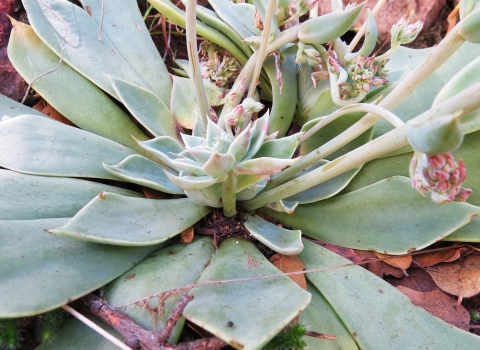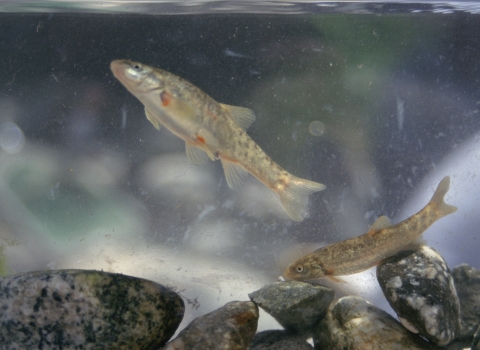Following a review of the best available scientific and commercial information, the U.S. Fish and Wildlife Service is proposing Endangered Species Act (ESA) protections for the western fanshell (Cyprogenia aberti) and a newly identified species known as the “Ouachita” fanshell (Cyprogenia cf. aberti). These two freshwater mussel species found in rivers and streams throughout Arkansas, Kansas, Missouri and Oklahoma are being proposed as threatened under the ESA.
Habitat loss, degraded water quality, changes to river and stream flows, and construction of dams and other barriers are the primary threats to the species. Continued urbanization and the effects of climate change climate change
Climate change includes both global warming driven by human-induced emissions of greenhouse gases and the resulting large-scale shifts in weather patterns. Though there have been previous periods of climatic change, since the mid-20th century humans have had an unprecedented impact on Earth's climate system and caused change on a global scale.
Learn more about climate change are also expected to intensify these threats.
The Service is also proposing critical habitat and a 4(d) rule for the western and Ouachita fanshells. Critical habitat is an area that contains essential habitat features for the survival and recovery of a listed species. A critical habitat designation imposes no requirements on state or private actions where no federal funding, permits or approvals are required. A 4(d) rule promotes conservation of listed species by encouraging management of the landscape to benefit both land management and conservation needs.
While reviewing the status of the western fanshell, it was discovered that the Ouachita fanshell is a separate species facing the same threats. The Ouachita fanshell is now recognized by scientists and taxonomic experts as its own distinct species.
The western fanshell is currently found in the Lower Mississippi-St. Francis, Neosho-Verdigris, and Upper White River basins, in Arkansas, Kansas, Missouri and Oklahoma and is considered locally extinct in the Lower Arkansas basin. Approximately 360 river miles, all of which are occupied by the species, in Arkansas, Kansas, and Missouri fall within the boundaries of the proposed critical habitat designation. About 60% of the proposed critical habitat for western fanshell overlaps with critical habitat already designated for two other mussels, the Neosho mucket and rabbitsfoot, or yellowcheek darter, a fish.
The mussel known as the Ouachita fanshell currently occurs in the Lower Red-Ouachita basin in Arkansas and historically occurred in Louisiana. Approximately 294 river miles in Arkansas, all of which are occupied by the species, fall within the boundaries of the proposed critical habitat designation. About 71% of the proposed critical habitat for the Ouachita fanshell overlaps with critical habitat already designated for the rabbitsfoot. The Service has also developed a draft economic analysis of the proposed designation of critical habitat for both species.
Both species are typically found in medium and large rivers with good water quality, moderate to swift current, and gravel-sand streambeds. Like all mussels, these two species are omnivores that primarily filter feed on a wide variety of microscopic particles in the water. As with most freshwater mussels, the fanshell mussels have a unique life cycle that relies on fish hosts for successful reproduction.
The proposal to list the western and Ouachita fanshells, and associated critical habitat and 4(d) proposals, will appear in the Federal Register on March 3, 2022. The publication in the Federal Register will open a 60-day public comment period that closes on May 2, 2022. The proposed rule and supporting documents are available for comment online at https://www.regulations.gov under docket numberFWS–R3–ES–2021–0061.


